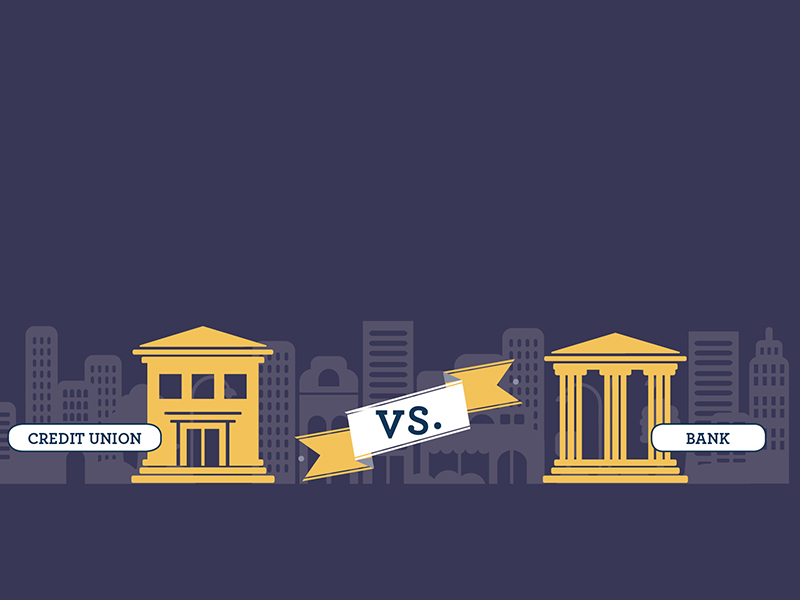Credit unions, banks deal in different currencies
“It’s not what credit unions do that makes them different from banks,” says Jim Nussle, president and CEO of the Credit Union National Association (CUNA). “It’s how we do it.” Banks and credit unions offer many of the same services—such as auto loans, savings and checking accounts and mortgages—but that does not mean they offer the same return on your investment.
Ownership
Credit unions are non-profit organizations owned equally by their members, regardless of the size of their account; as institutions run for profit, banks prioritize their own financial gain, while credit unions are by and for the people. Whereas bank customers have no ownership in their institutions nor the ability to select the board of directors paid to govern them, members of a credit union elect their board of directors, which serves without compensation. “[A credit union’s] main interest is providing valuable services to their clients without regard to profits,” says John Noffsinger, financial advisor and president of Noffsinger Financial Group in Newport News, Virginia.
Cost
Due to their self-serving nature, credit unions are able to return surplus income to members in a number of ways, translating to a more affordable banking experience. “Unlike banks, credit unions don’t issue stock or pay dividends to outside stockholders,” explains Nussle. “Instead, earnings are returned to members through lower fees and better rates on loans and accounts.”
Access
Anyone can become a bank customer, but some credit unions limit membership to certain groups such as educators, military personnel, employees of a specific company or residents of a particular community.
Convenience
Banking powerhouses, like Wells Fargo and Bank of America, have advantageous brand recognition that credit unions tend to lack. Online services, mobile apps and ubiquitous ATMs are some reasons some opt for a bank over a credit union. “You may choose a big bank over credit unions due to accessibility. This is in the form of more bank branches and more ATMS,” says Noffsinger. “Access means a lot.” However, according to Jamie Asciolla, chief operating officer at 1st Advantage Credit Union in Newport News, credit unions have made big gains in the convenience sector. “Most credit unions offer online banking, mobile banking and access to free ATMs,” he says.
“For example, at 1st Advantage Federal Credit Union, we provide access to over 65,000 free ATMs nationwide.”
Culture
Credit union members tend to be more satisfied with customer service than bank customers, according to the most recent findings of the American Customer Satisfaction Index. Based on questions such as staff courtesy, interest rate competitiveness and variety of financial services, in 2014, credit unions earned a score of 85 while banks earned a score of 76. Nussle attributes the popularity of credit unions to their smaller size and more personal service. “Credit unions focus on Main Street, not Wall Street,” he says.
Challenges Ahead
According to Nussle, credit unions are facing “crushing regulations” imposed in response to big-bank practices that caused the latest recession. The undue burden of broad and unnecessary regulations, he says, is proving difficult to bear by “punishing” credit unions for what he considers big-bank mistakes. Of course, banks face the same regulations, and the question comes down to which of the two is the better option. Nussle is confident the popularity of credit unions, with a current membership of more than 100 million, will continue to rise.

